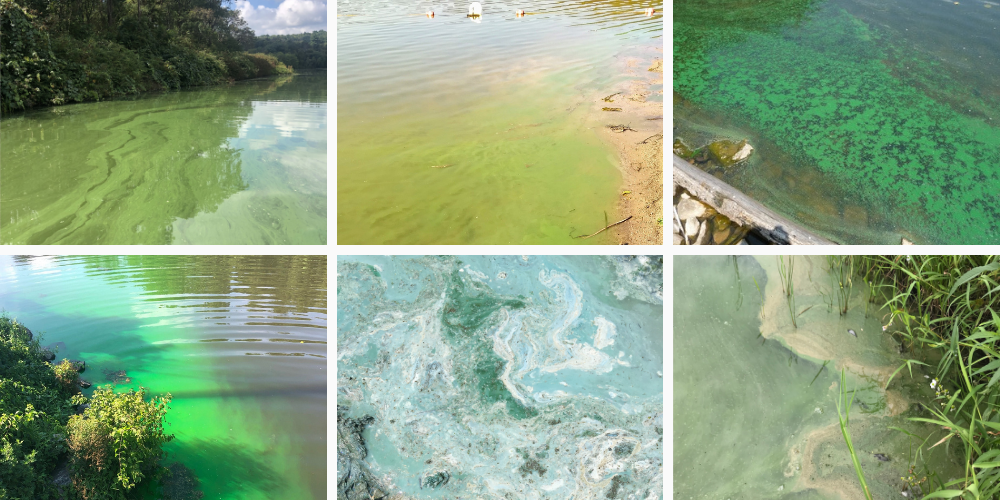How to Identify a HAB
Definitively identifying a HAB requires laboratory analysis of a sample from a waterbody, but visual observations of conditions in a waterbody is one of the most readily available strategies to identify a suspected HAB. The presence of a HAB cannot be confirmed by visual observation alone, and it takes some training and experience to learn to recognize suspected HABs by sight, but visual observation can be an important tool in the HAB monitoring toolbox.
If a HAB is suspected or confirmed to be occurring in a body of water, it is strongly recommended for people and pets to avoid contact with the water and avoid ingesting the water. If you or your pet becomes ill or shows signs of poisoning after being in or around a waterbody with a suspected or confirmed HAB, call your doctor, veterinarian, or the poison control center: Poison Control Center 800-222-1222; Animal Poison Control Center 888-426-4435.
If you have any health-related questions about HABs, please contact the Division of Environmental Health Epidemiology at the Pennsylvania Department of Health at
env.health.concern@pa.gov. For other inquiries about HABs or to report a suspected HAB, contact the Pennsylvania HABs Task Force at
HABs@pa.gov.
Depending on the specific organisms in a HAB and the specific weather and water conditions in which a HAB occurs, HABs can take on different visually observable characteristics. Any or all following visually observable conditions may indicate a suspected HAB:
- water that is usually clear becomes bright green, opaque, or otherwise discolored, in a uniform fashion and/or in globs (i.e., colonies), on and/or below the surface;
- water may appear soupy;
- water surface may appear to have grass clippings or paint like streaks; or
- surface scum or algal mats on the water surface or shoreline.
Here are some photographs of suspected and confirmed HABs in Pennsylvania waterbodies and waterways.

For more information and resources on how to visually identify potential HABs, see: